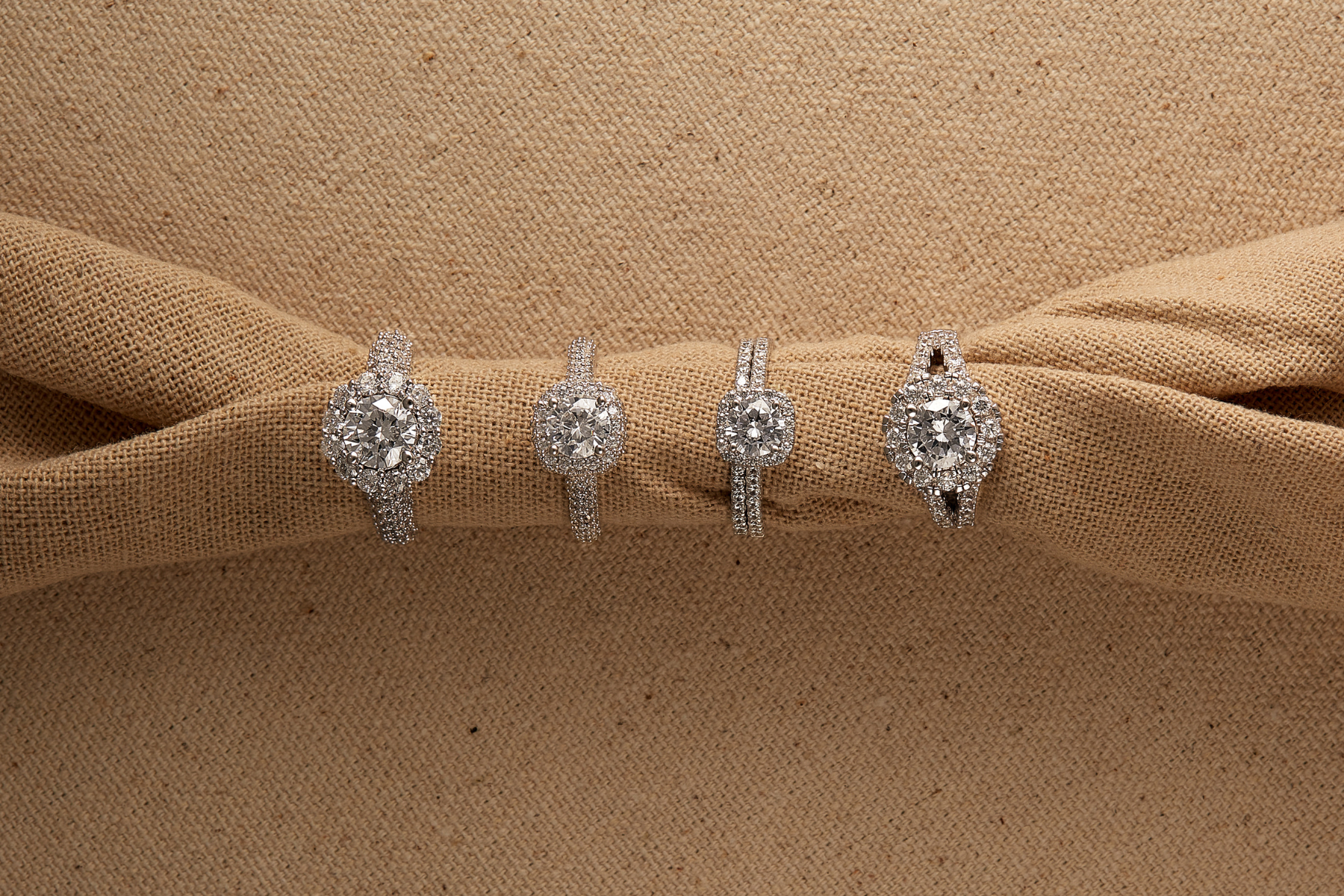
The Essential Guide to Engagement Ring Styles and Settings
Breathe in and out. In and out. There's no need to be anxious. You've already asked for her parents' blessing. She's going to say yes. And she'll be happy with any ring you choose because she loves you. Of course, it would be better if you got her the engagement ring of her dreams. This ring is a symbol of your love for her and your willingness to walk hand-in-hand with her, in goodness and in bad, for the rest of your lives. Obviously, getting a ring that suits her personality and sense of style can easily become a daunting task for a fiancé-to-be. And with so many engagement ring styles to choose from, it can take time to determine which one's The One.

What Is An Engagement Ring Setting?
Aside from the actual gem, the setting of an engagement ring is its most defining characteristic. It helps determine how the diamond will be mounted on the ring as well as influences the ring's overall design and appearance. As we've mentioned, there are a variety of engagement ring settings styles. The right setting for your partner will depend on their style and personality. For example, women who like retro stuff usually prefer vintage setting engagement rings. The most popular ring setting is the prong or claw setting. It features small "claws" that hold the diamond in place. The main reason for the popularity of the prong setting is that it puts the diamond on a pedestal - there for all to see.
How is the Gemstone Held in the Ring?
There are a variety of ways that a jeweler can use to hold the diamond (or any other gem, for that matter) in place.
Prongs
 The prong setting, as we've already mentioned, uses "claws" to hold a gem in place. Typically, a jeweler will use four or six prongs; while the latter provides a more secure hold, the former ensures that more light is able to shine through the diamond, making it sparkle even more. A prong setting can be used for most diamond shapes and sizes. The prongs can come in various shapes as well such as V-shaped, flat, and round. This type of setting gives the ring a more classic look. However, the diamond can snag on clothing and the prongs can loosen with wear.
The prong setting, as we've already mentioned, uses "claws" to hold a gem in place. Typically, a jeweler will use four or six prongs; while the latter provides a more secure hold, the former ensures that more light is able to shine through the diamond, making it sparkle even more. A prong setting can be used for most diamond shapes and sizes. The prongs can come in various shapes as well such as V-shaped, flat, and round. This type of setting gives the ring a more classic look. However, the diamond can snag on clothing and the prongs can loosen with wear.Bezel
The bezel is a thin metal rim that surrounds the center gem, holding it tightly in place. A gem can be placed in a full or a partial bezel (some sides of the gem are not covered). A bezel setting is a more secure option compared to prongs; it is also more suitable for those with an active lifestyle. This setting protects the diamond from snagging or chipping. It also gives the diamond ring ring a sleeker more modern appearance. However, the metal rim hides parts of the diamond which can affect how much light penetrates the gem, making it look smaller than it is.
Tension
This type of setting makes use of tension in the band to hold the gem in place, hence the name. It makes the diamond look like it's floating between the two sides of the shank. A jeweler will typically create tiny grooves on the shank to help keep the stone in place. In some cases, a jeweler will use a tension-style setting which looks almost the same. However, the design of the shank is more of a partial-bezel setting where parts of the shank surrounds the gem, keeping it in place. With a tension setting, the gem is securely held in place while also ensuring enhanced light reflection. It provides a more modern appearance and requires less maintenance than prongs. However, a tension setting engagement ring is harder to resize if needed. Also, it can make the center stone look small if a thick band is used.
Flush
The flush setting is also called the hammer or gypsy setting. With this type of setting, the jeweler will drill a hole in the band and set the diamond inside it, hammering the metal surrounding it to keep the gem in place. Similar to a bezel setting, only the top of the gem can be seen which can make the diamond less brilliant and even smaller than it is. In fact, it generally requires a smaller gem that can fit in the band. However, it does provide greater protection and suits people with an active lifestyle.
Popular Engagement Ring Styles

Pavé
This design features small diamonds embedded into the band of the ring and held in place by tiny metal beads or prongs. These tiny diamonds can enhance the sparkle of the center stone. It is also a great way to personalize your soon-to-be fiancée's ring.
Solitaire Engagement Rings
Of all the engagement ring styles, the solitaire setting is the most traditional. As the name suggests, this is a single stone engagement ring. The diamond is mounted on a single gold band using prongs.
Halo Engagement Rings
The halo setting engagement ring is one of the most popular styles today, particularly with celebrities. It features a center stone that is surrounded by a row of pavé-set diamonds. These smaller gems act as a "halo", reflecting light unto the center stone, making it sparkle even more. You can opt for a single halo or a double halo engagement ring (two circles of pavé-set diamonds). Some popular examples of this style include cushion cut halo engagement rings (square with rounded edges) and princess cut halo engagement rings (more geometric and modern).

Cluster
A cluster setting uses smaller stones grouped tightly together in order to create the appearance of one large stone. This is a good option if your partner prefers a large stone but you have a limited budget.
Cathedral
This design is one of the most elegant of all engagement ring styles. It features metal arches rising above the shank and supporting the stone, much like the arches of a cathedral. The cathedral can use a prong or bezel setting to hold the gem in place.
Three-Stone

This engagement ring style features a large center stone flanked by two smaller stones - one on each side. The "trilogy," as it is sometimes called, symbolizes the past, present, and future. Many three-stone rings feature a different type of gemstone for the side stones.
Obviously, there are numerous other engagement ring styles that you can choose from - shank or split-shank setting, filigree, two-stone, channel setting, bar setting, etc. Diamond eternity rings are great option too: they have something to speak for themselves.
But the ones we've mentioned above are the designs most women love. That being said, your choice will still depend on only two factors - your girl's style and your budget. So, choose wisely.


